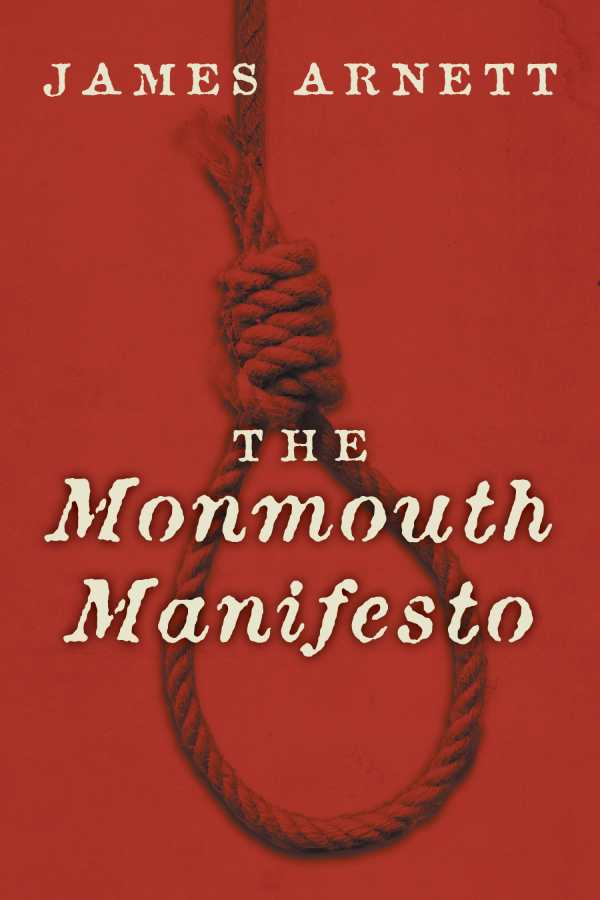The Monmouth Manifesto
Men’s morals are tested during the Revolutionary War in the thoughtful novel The Monmouth Manifesto, about loyalty, espionage, and the consequences of following orders.
In James Arnett’s dramatic historical novel The Monmouth Manifesto, a pair of British loyalists engage in spycraft and political intrigue in the closing days of the American Revolution.
Richard and his family struggle to fit in with their Quaker community as his faith weakens. The American Revolution is underway, and most of the British loyalists have taken up arms against the Continental Army. But some, like Richard, find that war clashes with their faith; they do their best to keep their heads down and focus on farming.
When Richard is asked to take an oath declaring his loyalty to the American colonies, which his religion forbids, he ends up on the run. He joins up with British forces rather than facing imprisonment or execution at the hands of the rebels. Another religious outcast, James, becomes a fast friend and partner in his spying for the British.
Richard and James face off against Jack, a ruthless rebel leader. Jack is prone to violent outbursts and delights in abusing his power; word of his exploits spreads. Later, Jack’s death leads to a brief but intense courtroom drama during which Richard tries to prove his innocence against those who paint him as vindictive.
Mimicking the long communication times of the era, the story assumes a drawn-out pace. Between its action scenes, ample space is devoted to fleshing out Richard’s and James’s struggles with loyalty and faith. Through successful and failed missions, they fight alongside pivotal figures, including George Washington and Benedict Arnold, navigating their personal flaws with a sense of determination. Questions about people’s culpability when they’re following orders wend in.
While the book’s inclusion of letters and historical documents representing period language results in authenticity, as when the colonies are described as being like “a clunky necklace down the east coast of North America,” its often more modern prose, as with the casual uses of “whatever” and “What a difference a day makes!”, works against it. Further compromising the book’s verisimilitude, while Richard and James are based on real historical figures, here they’re made to interact for dramatic effect, whereas their real-life encounters are unknown. More rooted in the record are glimpses at the effects of Richard’s court-martial on others, as well as the maps, character lists, and timeline that are included to keep the large cast, various locations, and multitude of events straight.
Both rooted in history and taking liberties with its details, the sprawling novel The Monmouth Manifesto is about crises of faith in the time of the Revolutionary War.
Reviewed by
John M. Murray
Disclosure: This article is not an endorsement, but a review. The publisher of this book provided free copies of the book and paid a small fee to have their book reviewed by a professional reviewer. Foreword Reviews and Clarion Reviews make no guarantee that the publisher will receive a positive review. Foreword Magazine, Inc. is disclosing this in accordance with the Federal Trade Commission’s 16 CFR, Part 255.

